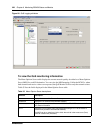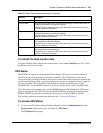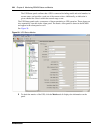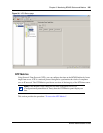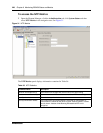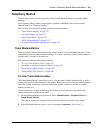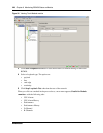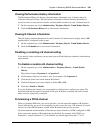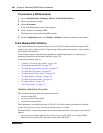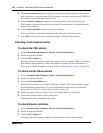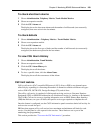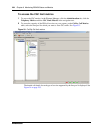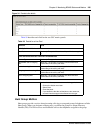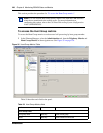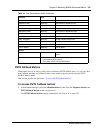
230 Chapter 9 Monitoring BCM50 Status and Metrics
NN40020-600NN40020-600
To provision a PRI B-channel
1 Choose Administration, Telephony Metrics, Trunk Module Metrics.
2 Choose an expansion module.
3 Choose B channels.
A list of the B channels on this module appears.
4 Click a channel, for example, B 01
The display shows the status of the PRI channel.
5 On the Configuration menu, click Enable or Disable to change the setting for the channel.
Trunk Module CSU statistics
Each trunk module has an internal channel service unit (CSU). When enabled, the internal CSU
monitors the quality of the received T1 signal and provides performance statistics, alarm statistics,
and diagnostic information.
Trunk modules must be individually programmed to establish parameters for collecting and
measuring transmission performance statistics by the CSU.
For more information, refer to:
• “Statistics collected by the system” on page 230
• “Enabling the internal CSU” on page 231
• “To check the performance statistics” on page 231
• “To check the CSU alarms” on page 232
• “To check carrier failure alarms” on page 232
• “To check bipolar violations” on page 232
• “To check short-term alarms” on page 233
• “To check defects” on page 233
• “CbC limit metrics” on page 233
Statistics collected by the system
The system accumulates three performance parameters:
• errored seconds (ES)
• severely errored seconds (SES)
• unavailable seconds (UAS)
These parameters are defined according to TIA-547A. Errored seconds are enhanced to include
control slip (CS) events. Only near-end performance data is recorded.
The internal CSU continuously monitors the received signal and detects four types of transmission
defects:
• any active carrier failure alarms (CFA), such as loss of signal (LOS), out of frame (OOF),
alarm indication signal (AIS), and remote alarm indication (RAI)



